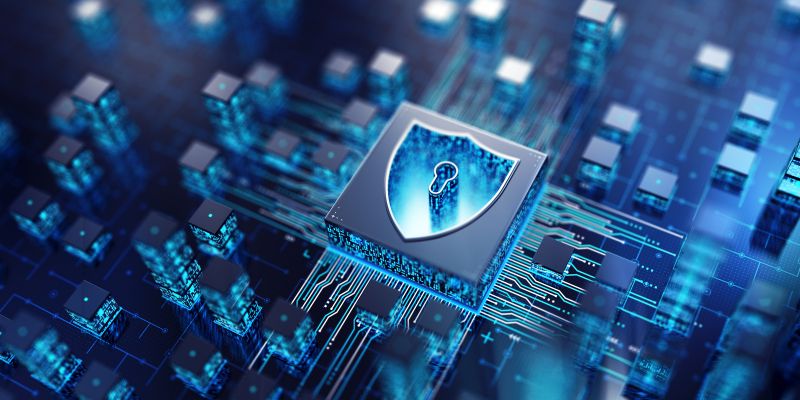
Modern security systems are no longer confined to physical barriers and alarms alone. Today, the convergence of physical and cyber security has made protecting security systems from cyber threats imperative. As security systems become increasingly connected through IoT devices and cloud-based platforms, hackers can exploit vulnerabilities, potentially compromising access control, video surveillance, and alarm monitoring.
Understanding the best practices and advanced strategies for safeguarding your security system against cyber attacks is important.
Understanding Cyber Threats in Security Systems
Cyber threats targeting security systems come in various forms. Common threats include malware, ransomware, phishing attacks, and Distributed Denial of Service (DDoS) attacks that can overwhelm your network. Hackers often exploit vulnerabilities in IoT devices, cloud platforms, and even outdated firmware in system components to gain unauthorized access. When these vulnerabilities are exploited, attackers can disable alarms, intercept sensitive data, or even manipulate system functions to bypass security measures.
The impact of a successful cyber attack can be severe—compromising the safety of a building, delaying emergency responses, and exposing organizations to significant financial and reputational risks.
Key Vulnerabilities in Modern Security Systems
Modern security systems can be exposed to several vulnerabilities if not properly secured:
- IoT Device Vulnerabilities: Smart cameras, sensors, and access control devices often run on outdated firmware or have weak default security settings. Without proper configuration, these devices can serve as entry points for cyber criminals.
- Cloud-Based Monitoring Risks: Cloud-hosted platforms offer immense benefits but also present risks if not secured. Unencrypted data transmission, poor authentication practices, and lack of regular security updates can leave cloud systems exposed to attacks.
- Network Infrastructure Weaknesses: Unsecured networks, outdated routers, or poor segmentation can allow attackers to move laterally through a system, compromising multiple devices and critical data.
- Legacy Systems: Older security systems that haven’t been updated to incorporate modern security protocols are particularly vulnerable. These systems might not support encryption or advanced authentication methods, making them easy targets for hackers.
- Third-Party and Vendor Risks: Outsourcing monitoring or maintenance services to third parties can introduce additional vulnerabilities if those vendors do not adhere to stringent cybersecurity practices.
Best Practices for Cyber Protection
To mitigate these vulnerabilities, it is essential to implement a robust cybersecurity framework customized to your security systems:
- Robust Network Security: Deploy strong firewalls, intrusion detection systems, and secure network segmentation to isolate critical systems from potential threats. Regularly update network equipment firmware to protect against known vulnerabilities.
- Regular Software Updates and Patch Management: Ensure that all devices, firmware, and software are kept up to date. Establish a routine patch management schedule to close security gaps as soon as they are identified.
- Multi-Factor Authentication (MFA): Enhance security by integrating MFA for system access. This can include combinations of passwords, biometric scans, or one-time codes, making unauthorized access significantly more difficult.
- Strong Password Policies and Encryption: Implement complex password requirements and enforce regular changes. Encrypt sensitive data both in transit and at rest to prevent interception and unauthorized access.
- Vulnerability Assessments and Penetration Testing: Conduct regular security audits and penetration tests to identify and remediate potential weaknesses. These assessments help ensure that the system is resilient against evolving cyber threats.
- Secure Vendor Management: Evaluate third-party vendors and service providers to ensure they follow robust cybersecurity protocols. Regularly review vendor security practices to maintain an integrated security posture.
Advanced Cybersecurity Strategies
Beyond best practices, advanced strategies further strengthen your security systems:
- AI-Driven Security Monitoring: Leverage machine learning algorithms to analyze network traffic and system activity in real time. AI-driven systems can detect anomalies and potential breaches faster than traditional monitoring methods.
- Zero-Trust Security Model: Adopt a zero-trust approach where no user or device is trusted by default. Implement strict access controls, continuous verification, and granular permission settings to limit potential breaches.
- Integration with SIEM Systems: Utilize Security Information and Event Management (SIEM) systems to centralize and analyze security data from various sources. SIEM systems provide real-time threat detection and automated responses to suspicious activity.
- Continuous Monitoring and Automated Response: Set up continuous monitoring systems that automatically alert IT and security personnel when abnormal activity is detected. Automated response mechanisms can isolate compromised devices or network segments to prevent further damage.
HRSS/SMG’s Role in Enhancing Cybersecurity for Security Systems
HRSS/SMG stands out as a leader in designing, installing, and maintaining secure, integrated fire and security systems. Our team of experts collaborates with electrical contractors and facility managers to develop customized solutions that combine robust physical security with advanced cybersecurity measures. We provide:
- Expert Consultation: We offer specialized advice to integrate cybersecurity seamlessly into your security system.
- Customized Security Solutions: Designing systems that meet current standards and anticipate future threats.
- Ongoing Support and Monitoring: Providing continuous maintenance, updates, and system checks to ensure optimal performance and resilience.
- Integrated Security Offerings: Combining fire alarm monitoring, access control, and video surveillance into a cohesive, secure system that safeguards your entire facility.
By partnering with HRSS/SMG, you gain access to industry-leading expertise and advanced fire and life safety technology, ensuring your security systems remain robust against cyber threats while maintaining operational efficiency.
Protecting your security system from cyber threats is no longer optional—it’s a critical component of modern building management. Leveraging advanced cybersecurity measures, such as AI-driven monitoring, zero-trust models, and integrated systems, can significantly reduce the risk of breaches and system failures. By embracing these strategies and partnering with experts like HRSS/SMG, building owners and superintendents can ensure their facilities remain secure, compliant, and resilient in the face of evolving cyber challenges.
HRSS/SMG delivers comprehensive security solutions that integrate advanced cybersecurity with robust fire and life safety systems. Our experienced team provides customized, cost-effective services designed to protect your assets and ensure compliance. Contact us today to learn how our integrated security services can safeguard your facility against modern cyber threats.



